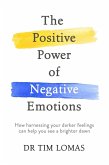The current shame theorists suggest that shame is one of the so-called self-conscious emotions because it mainly involves evaluating the self. A scandal is believed to be an incapacitating emotion accompanied by the feeling of being small, inferior, and shrinking. The self, as a whole, is devalued and considered to be inadequate, incompetent, and worthless. Shame might also involve the feeling of being exposed, condemned, and ridiculed.
Unlike basic emotions, shame does not seem to have distinctive universal facial expressions. It is not experienced similarly in different cultures. Emotions such as shame, pride, guilt, embarrassment, envy, empathy, and jealousy are associated with a sense of self and self-awareness; hence, they belong to a family of self-conscious emotions. To experience shame, individuals need an ability to form self-representations, internalize external values, and compare and evaluate themselves. Therefore, guilt is not experienced in species with lower cognitive skills and understanding.
People tend to experience shame when they become aware of the difference between their actual and ideal self-representation, attribute an adverse event to the self and evaluate the self negatively, or see themselves as having a lower status. In this part, we look at each of these theories.
In shame, there is a feeling of inadequacy, unworthiness, and inferiority. Guilt can occur when someone makes internal, stable, uncontrollable, and global attributions for a negative incident or feels they have a lower status concerning others.
Women and people from underprivileged backgrounds, minorities, and working-class people are more prone to experience shame.
Dieser Download kann aus rechtlichen Gründen nur mit Rechnungsadresse in A, B, CY, CZ, D, DK, EW, E, FIN, F, GR, H, IRL, I, LT, L, LR, M, NL, PL, P, R, S, SLO, SK ausgeliefert werden.









